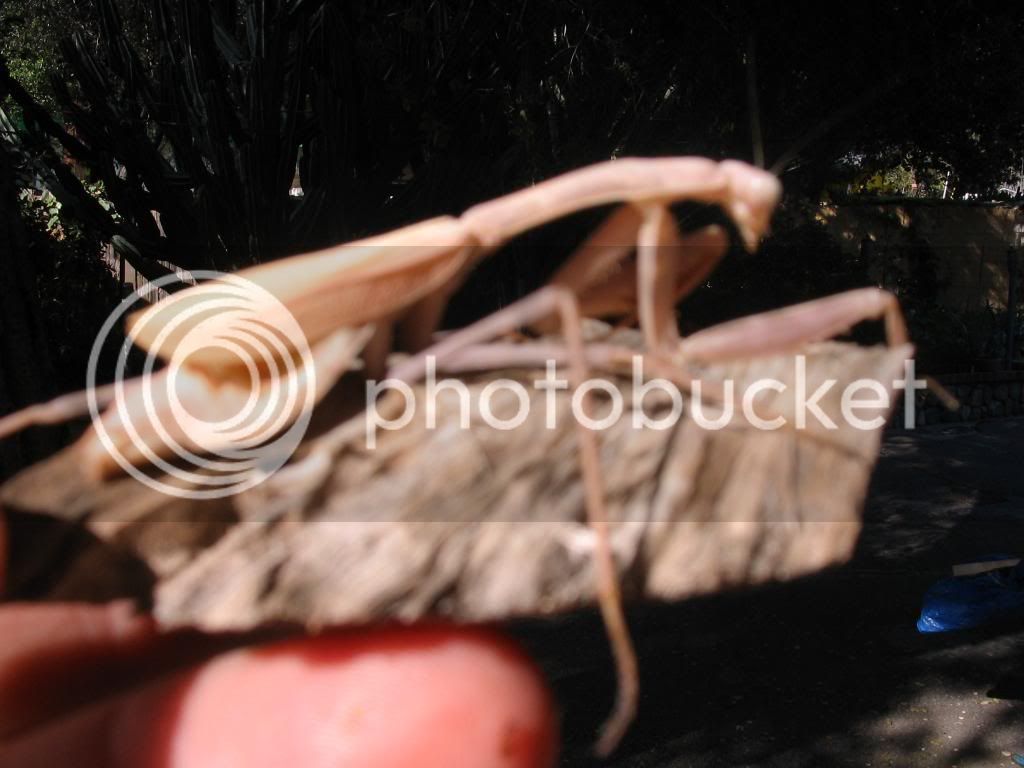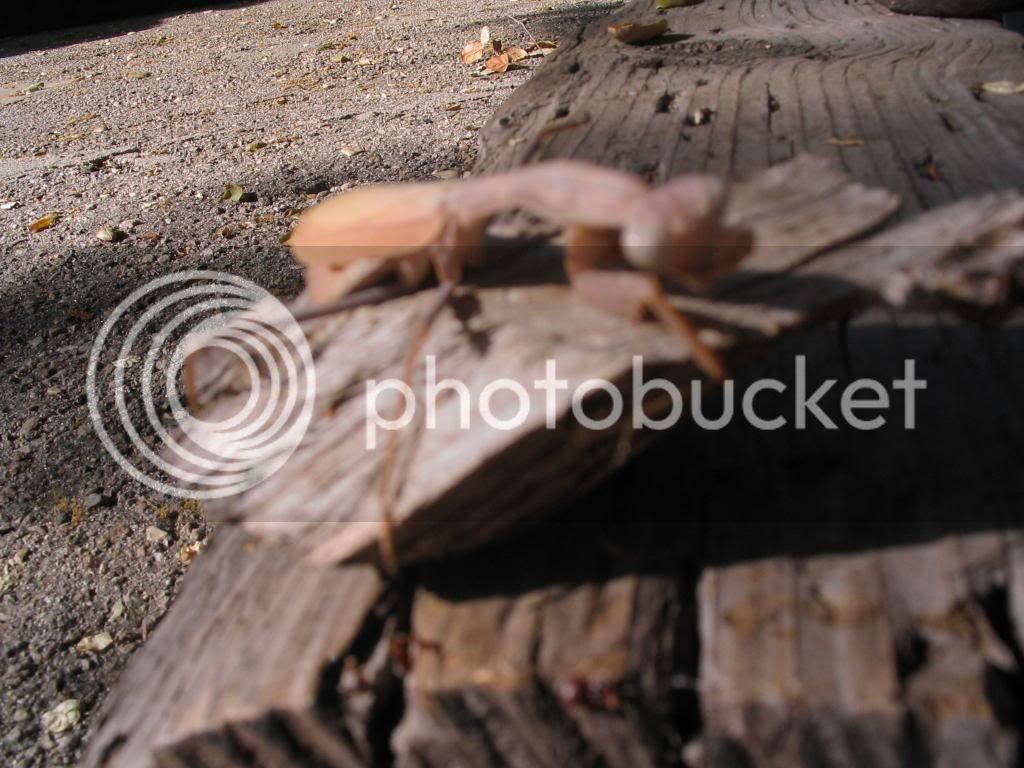cloud jaguar
Well-known member
My first pet mantis to grow from found ooth to adult appeared sick when i returned from work today. It is very sad since this is a pink morph which I wanted to breed to one of our males.
Mother was very robust large S. Limbata female - ooth hatched and we raised 25 or so from hatchlings. Not many casualties through subadulthood. We misted these and fed them on a diet of crickets fed on oats, dog food, leafy greens and polen but not lately.
Since she is pink morph, she has exhibited similar frailties as other pinks we hav e and is not nearly as robust as her mother. Surprisingly we have almost no greens - the mother was green. Also we have about 70% males - about 1/2 of which are curly winged like Kamakiris.
While my wife and i very much wanted to breed the pink ones, they seem, as i mentioned, kind of weak. OUr pink female just became an adult about 2 weeks ago - we were rethinking breeding her given the apparent problems with the males from this ooth re their wing development - unpumped wings. Could this trait of wings be due to inbreeding and can it be passed on genetically? Since this was wildcaught i cant really know if it was inbred.
Here are some pictures of the sick mantis When i came home from work she was just laying listless on the bottom of ther cage - on her belly, with claws dug into the mesh of her 12" x12" net cage.
When i came home from work she was just laying listless on the bottom of ther cage - on her belly, with claws dug into the mesh of her 12" x12" net cage.




Is there anything I can do to help this mantis? - yesterday she ate 1 large cranefly and 1 cricket. Today I fed her a drop of honey which she ate laying on her back in my hand and also a drop of water.
A note on color - if you recall my "Pearl Crack Experiment" posts about this metallic textured origami paper in electric blue, yellow and pink that i put outside the plastic deli cups i kept the mantids in you will also recollect that there were varied opinions as to what efffect this would have on the mantids. I have changed and rechanged the enclosures of the mantids so many times that i can no longer tell what their original enclosure color was - so i know this failed experiment is not really probative of anything. HOWEVER, 90 percent of these mantids are very colorful with a majority pink or tan camo morph (c. 65%), black or charcoal (c10%), pink/green/red/purple leg combo c10%), green (20%). Given that i have only seen green ones in nature - either i truly suck at seeing non green mantids (entirely possible), or this ooth and color conditions produced color morphs other than green due to color stimuli or other factors. or some combination of the two.
Antways, i am sad my favorite mantis may be dying and i wonder what i can do to help her? Thanks.
~arkanis
Mother was very robust large S. Limbata female - ooth hatched and we raised 25 or so from hatchlings. Not many casualties through subadulthood. We misted these and fed them on a diet of crickets fed on oats, dog food, leafy greens and polen but not lately.
Since she is pink morph, she has exhibited similar frailties as other pinks we hav e and is not nearly as robust as her mother. Surprisingly we have almost no greens - the mother was green. Also we have about 70% males - about 1/2 of which are curly winged like Kamakiris.
While my wife and i very much wanted to breed the pink ones, they seem, as i mentioned, kind of weak. OUr pink female just became an adult about 2 weeks ago - we were rethinking breeding her given the apparent problems with the males from this ooth re their wing development - unpumped wings. Could this trait of wings be due to inbreeding and can it be passed on genetically? Since this was wildcaught i cant really know if it was inbred.
Here are some pictures of the sick mantis




Is there anything I can do to help this mantis? - yesterday she ate 1 large cranefly and 1 cricket. Today I fed her a drop of honey which she ate laying on her back in my hand and also a drop of water.
A note on color - if you recall my "Pearl Crack Experiment" posts about this metallic textured origami paper in electric blue, yellow and pink that i put outside the plastic deli cups i kept the mantids in you will also recollect that there were varied opinions as to what efffect this would have on the mantids. I have changed and rechanged the enclosures of the mantids so many times that i can no longer tell what their original enclosure color was - so i know this failed experiment is not really probative of anything. HOWEVER, 90 percent of these mantids are very colorful with a majority pink or tan camo morph (c. 65%), black or charcoal (c10%), pink/green/red/purple leg combo c10%), green (20%). Given that i have only seen green ones in nature - either i truly suck at seeing non green mantids (entirely possible), or this ooth and color conditions produced color morphs other than green due to color stimuli or other factors. or some combination of the two.
Antways, i am sad my favorite mantis may be dying and i wonder what i can do to help her? Thanks.
~arkanis












































